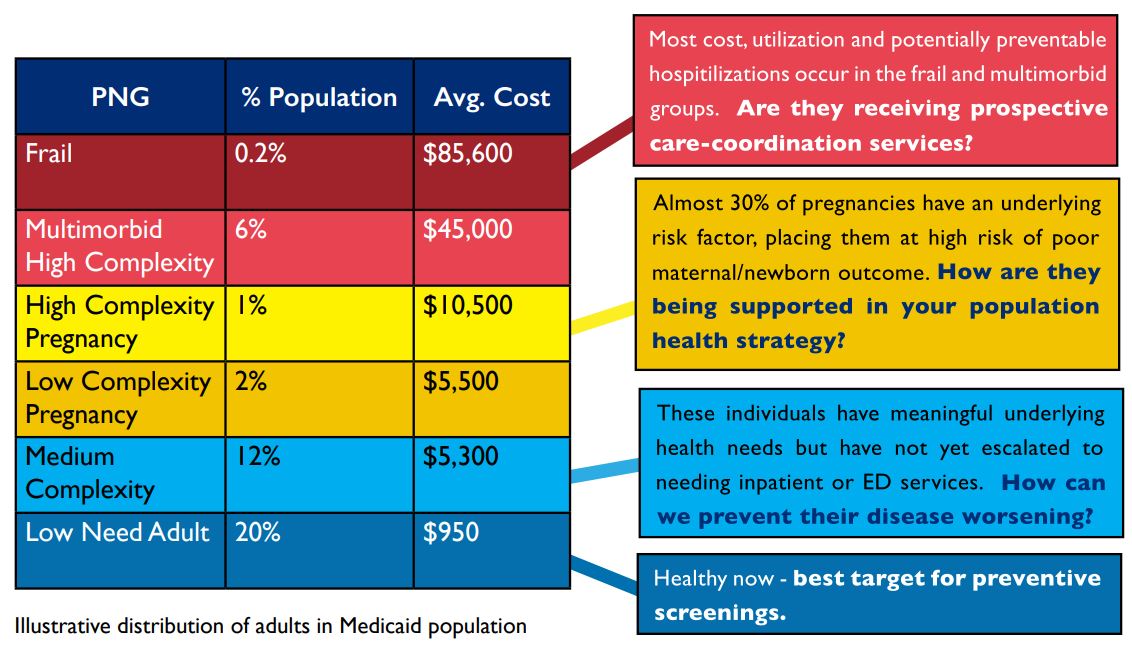

The new ACG Health Equity e-guide shows organizations like yours how they can create an effective and practical health equity strategy using our groundbreaking ACG System. Prior blogs have discussed the need for a robust health equity plan, the importance of uncovering health disparities when analyzing your population and the smart features within the ACG System that allow users to create their strategies. Today, we are highlighting a real-world example of how one customer used the ACG System to create a clear view of health need and cost of care for their Medicaid population.
This ACG System user needed to determine the projected cost and level of health needs for their Medicaid patients. Using the ACG System, they applied the Patient Need Groups (PNGs), Social Need Markers and ACG GeoHealth features to segment their population. The table below shows how the population was grouped by their associated PNG and determined the percent of the population that group represented and the average projected health care cost for each group.

Because of this view, they were able to clearly see how much of their Medicaid population was driving the highest costs and highest level of potentially preventable hospitalizations.
Using our innovative features, this ACG System user saw that less than 1% of their Medicaid patients were at the highest level of need. This information allowed them to plan future care coordination efforts and understand the predicted risk for each group. This is particularly beneficial for planning community health outreach events and targeted preventive screenings. Additionally, the ACG System allowed this user to analyze predicted risk, going a step further in evaluation the rising-risk population and allowing them to engage in long-term planning and implement appropriate interventions.
The models generated from the ACG System helped this particular user — and many others — understand the health needs across their entire Medicaid population. By applying an Area Deprivation Index (ADI), they also uncovered which segments had higher levels of adversity and disadvantages. Patients with a high ADI were less likely to visit a specialist for medical care, but not because it was unnecessary; patients in this group often lack available local providers or have other barriers to care, so they are more likely to have preventable Emergency Department (ED) visits.
Thanks to advanced ACG System functionality, users can build a robust population health strategy that improves health outcomes across an entire population. Our System uses existing data that is both insightful and meaningful to combat disparities and create equitable outcomes.
You can learn much more about the features and benefits of the ACG System and how it can help you develop an effective health equity strategy by downloading our Health Equity e-guide “Disparities in Health Care and How Population Health Analytics Can Help.” If you are already an ACG System user, please reach out to your account manager for more information.
Follow Us